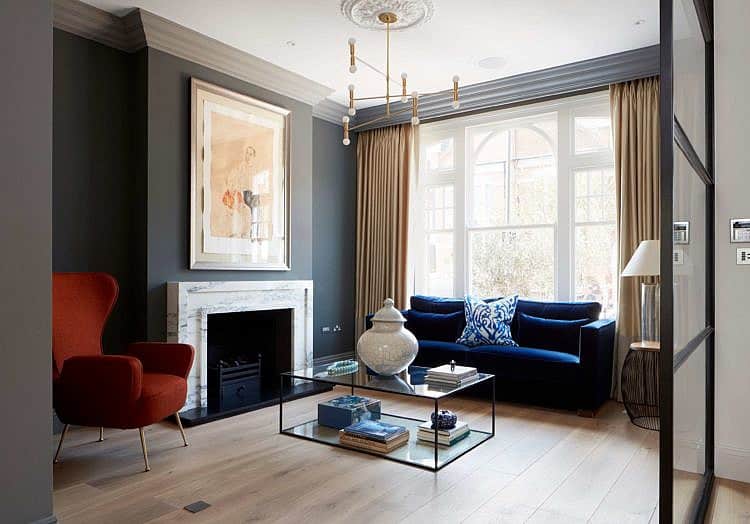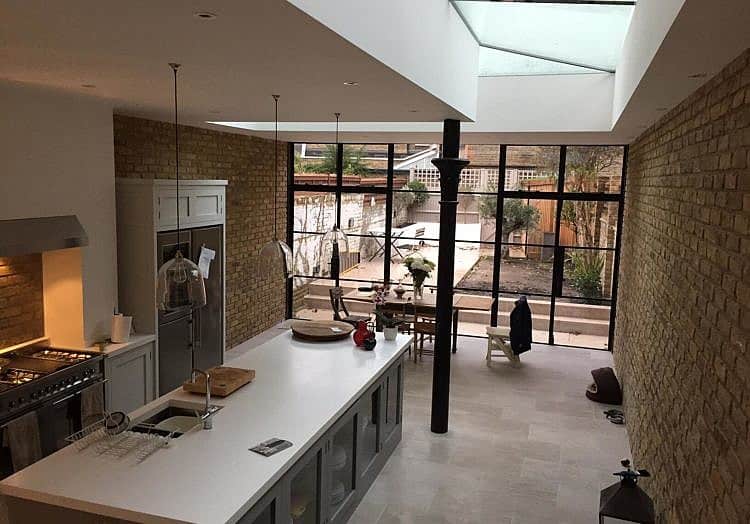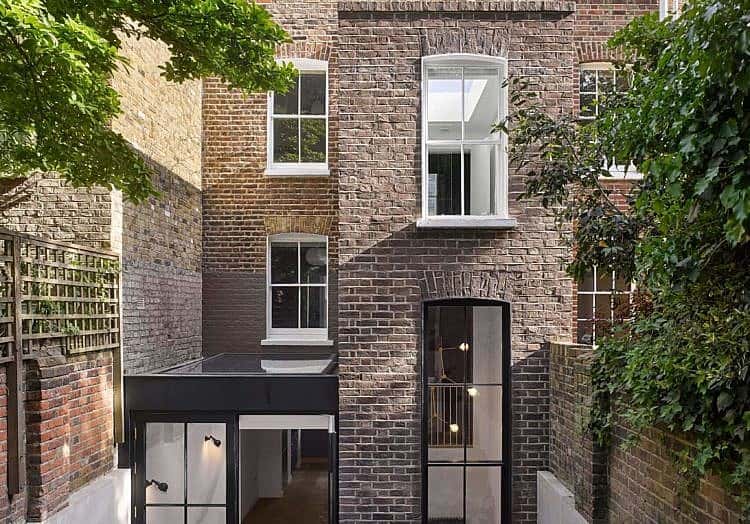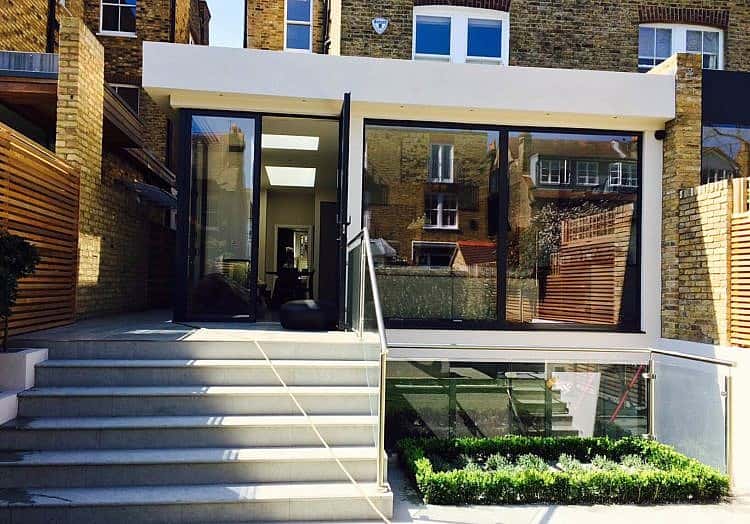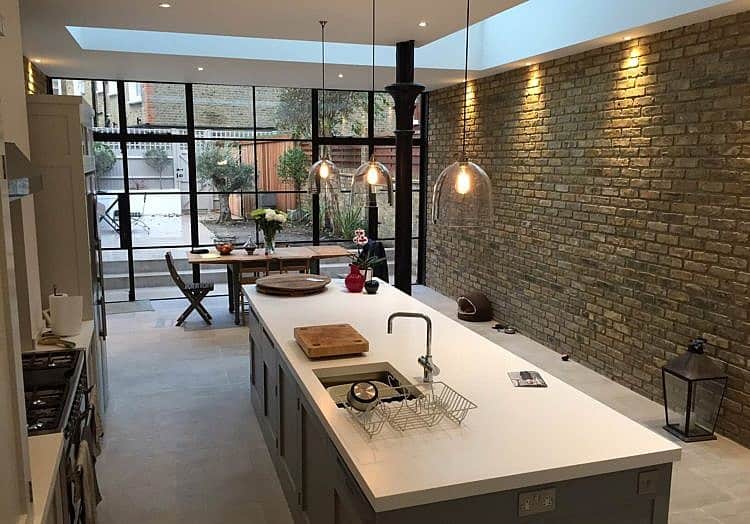 25 years experience
25 years experience  Restoration Experts
Restoration Experts  Award Winning
Award Winning  Basement Specialists
Basement Specialists Blog
LATEST POSTS
This useful article in Houzz shares some creative suggestions on how to make best use of that front room when you build an extension at the back of the house.
You don’t want it to become a dumpyard do you?
If you’d like some guidance on your home improvement project, give us a call on 02081917595. Or better still, book a FREE consultation with us and we’ll visit your property, discuss your ideas and share some of our recommendations with no obligation.
Read MoreIf you are thinking of building a house extension in London, and don’t want to compromise your rear garden space, why not consider an extension to the side of your house? This is known as a side return extension and most common in Victorian terrace houses where the original building leaves a strip of land on the side of the house making an L shaped garden.
Of course, they can be used in any home and often they are the more cost-effective way of increasing the living area in your home. You could even consider a wraparound extension that combines a side extension with a rear extension.
There are usually two reasons people choose a side extension over a rear extension – space and cost. In Central London, where homes usually don’t have large rear gardens or are terraced or semi-detached, a side extension is the only way to expand the living space… Remember, as space is at such a premium in London, any addition/ extension/ expansion will add value to your property.
One of the first questions we get asked is by homeowners is “how much does a side extension cost? The simple answer is “it depends…”
The cost of building a side return extension is dependent on a number of factors including:
- The size of the extension
- The layout of the garden
- Ground conditions
- Proximity to neighbouring properties
But just to give you an approximate idea, typically, in London, a side return extension can cost anywhere between £3,000 – £5,000 per square metre. So, for a ten metre extension, it could be between £30,000 – £50,000 (+VAT and professional fees). This does not include areas like the actual kitchen, flooring, furniture, paint, heating… anything that makes the space actually liveable. This approximate cost … and we would like to emphasise the word approximate… is for putting in foundations, building an external wall and roof, installing insulation and applying internal finishing, including plastering. Source: designfor-me.com
The other question we often get asked is about planning permission. “Do I need planning permission for my side return extension?” The answer is no. Side return extensions fall under permitted development.
According to an article in propertypriceadvice.co.uk, a side return extension doesn’t need planning permission as long as it satisfies certain criteria. These are:
- It must be attached to a house (flats and maisonettes don’t qualify).
- Permitted Development rights may be restricted if your home is in a conservation area.
- To qualify for PD, a side return rear extension must not extend beyond the rear wall of the original house by more than three metres (if it’s an attached house) or by four metres (if it’s a detached house). Until 30 May 2019, these limits are doubled for both attached and detached houses.
- A side return extension must be single storey (no more than four metres high) and must not exceed more than half the area of land around the original house (as it was first built or as it stood on 1 July 1948 if it was built before that date).
- It must also be no wider than half the width of the original house.
- If the extension is within two metres of a boundary, maximum eaves height should be no higher than three metres to be permitted development.
- As well as satisfying these conditions, you’ll need to notify the local authority of your proposal and formally consult neighbours. If there are objections, the proposal might not be allowed, so it’s wise to seek advice before getting started.
Like any other house extension in London, you will need to get building regulation approval and chances are that you will need a party wall agreement with your neighbour, given the proximity of properties in the central and west London areas. Under the Party Wall Act, you must give notice to your neighbours if you want to carry out any building work near or on your shared property boundary (the ‘party wall’). This must be done between two months and a year before you plan to start the work. Your neighbour then has 14 days to assess how the side return extension will affect their property and to respond in writing.
As we have been working in the West London area for several years, we are well-versed with the different types of house extensions across the city. Give us a call if you’d like to discuss your extension plans. We can be contacted on 0208 191 7595 or email us at enquiries@sdabuildlondon.co.uk to discuss how we can help.
To have a look at the kind of work we have done, why not download our free brochure? And if you need any help with managing your building project, our free project management checklist has been hugely popular.
Read More
In our line of work, it’s all about creativity. Creativity in design and creativity in solutions.
We recently came across this article in Dezeen on an incredible and funky extension in a Grade II listed property in North London and thought we’d share it with you.
Read all about it here…
If you’d like some guidance on your home improvement project, give us a call on 02081917595. Or better still, book a FREE consultation with us and we’ll visit your property, discuss your ideas and share some of our recommendations with no obligation.
Read MoreSo, you’ve decided that you are ready to embark on a “renovating your home” project and building an extension is the plan. The next big decision iso to choose they type of extension. Of course, the biggest factor in this decision is the budget. No doubt about that. You may have the budget for a large, double-storey extension but decide that a single storey extension will do just fine.
We thought we’d give you a quick and easy guide to what types of extensions are out there for you to consider for your London home.
- Single Storey Extension
As the name suggests single storey extensions are ground floor extensions out of the existing floor plan of the house. These can be at the front of the house, on the side or at the rear of the house. Single storey rear extensions are the most popular ones as they open up the house and connect it with the garden. People who decide to go with this type usually have a garden in the rear part of their houses and they can afford to lose a little bit of it for the sake of extending their home by few meters. By adding bi fold or sliding doors, you can create an open space linking your outside space with the internal.
The design can vary from flat roof to a pitched tiled roof. Even though pitched roof often looks better and lasts longer, you need to consider access to heights where maintenance is needed.
- Double Storey Extension
A double-storey extension is an extension out on the ground floor as well as above, on top of the single storey extension. Get the picture?
This type of extension is ideal for growing families where you might need more or larger bedrooms and probably additional bathrooms. Many of the homes in the West London area are inadequate for practical living in the modern world, with large homes being serviced by a single bathroom. Whilst this sort of extension allows homeowners to increase their living space, double storey extensions are harder to get through planning simply because of the impact they may have on neighbours and the surrounding area.
Property type and overall design are the key facts that attention must be paid to. The extension must not cause any serious loss of sunlight to rooms and gardens of adjoining properties. Another important requirement is that the design of the new part of the house must match the existing property and fit into character of the neighbourhood that means – match the materials used, roof form and same type of windows and doors. It also cannot dominate the property.
- Garage Extensions
Who uses their garage for their cars? It’s very rare, especially in London, for people to actually park their cars in their garage. For one, many garages are not large enough for the large family cars most families have, but also, why waste that space on your car, when you can use it for a gym or a games room or even an office?
The great thing about converting your garage is that you can avoid losing coveted garden space that a rear extension would. The main question comes whether the garage is attached or detached from the house. Both can be turned into the living space, although detached garages might need a planning permission.
- Orangery
An orangery is a cross between a conservatory and a traditional single storey extension. Made with brick-built pillars, orangeries are usually designed to feature a raised glass roof structure that can flood the space inside with natural light. Orangeries are versatile and can be used as a kitchen, dining room, living room, play room, music room or office. And they are cheaper than single-storey extensions.
In most cases, an orangery can be added without planning permission because it is classed as a ‘permitted development’ but specific conditions must be met to abide by this law.
Available in a wide range of traditional and contemporary styles, orangeries are usually bespoke and designed to suit your existing property. This allows you to select the size, shape and roof style which will best complement your home’s interior and exterior appearance.
Building an extension to your home requires time, patience, research and a decent budget. We recommend you begin the process by:
- Appointing an architect that is aware of local planning rules – Find out how to choose the right architect here. Or why not download our FREE Guide to The Top London Residential Architects 2019.
- Talking to your local council about what they will allow
- Creating a detailed project management checklist so you are on top of all the little details that need to be thought through. Download your FREE Project Management Checklist now and make your home extension project smooth and seamless.
SDA Build London have been working in the West London area for several years and are well-versed with the do’s and don’ts in the area with regards to what the councils will allow and what they won’t. We suggest you give us a call [Symbol] if you have any doubts or need to discuss whether your extension ideas… will get through planning. We can be contacted on 0208 191 7595 or email us at enquiries@sdabuildlondon.co.uk to discuss how we can help.
Read MoreThat’s like asking how long is a piece of string? Still, we understand that it’s important to know even an approximate cost before deciding whether you are financially able to undertake a home extension project.
We did some digging around and found this handy Extension Cost Calculator on the Homebuilding and Renovation website. All you need to do is enter some details about your property.
BIG DISCLAIMER! The costing you receive from this cost calculator is only an approximate indicator. It is by no means set in stone and has the potential to increase or decrease based on your specific requirements. Its only purpose is to give you a general idea.
If you’d like some more detailed guidance and costs on your home extension project, give us a call on 02081917595. Or better still, book a FREE consultation with us and we’ll visit your property, discuss your ideas and share some of our recommendations with no obligation.
Read More
